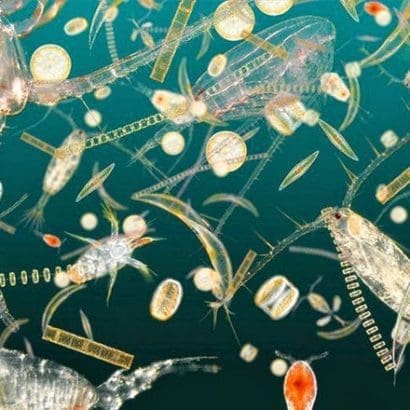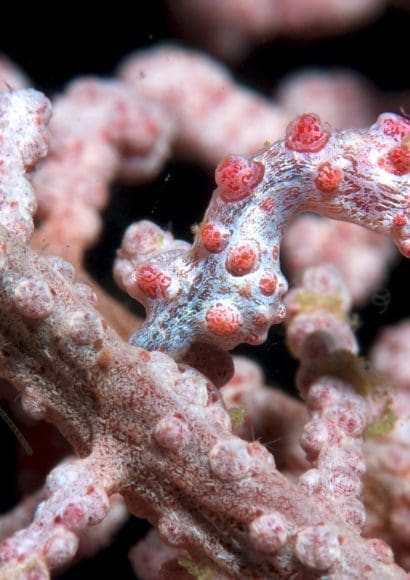
The world beneath the ocean’s surface is teeming with life, showcasing a remarkable array of colors, shapes, and behaviors. Among the many fascinating adaptations found in marine creatures, one of the most captivating is their ability to camouflage themselves seamlessly with their surroundings. From cleverly disguising as rocks to mimicking other marine species, these animals possess impressive camouflage abilities that help them survive and thrive in their watery habitats.
In this article, we will explore the incredible world of marine animals with astonishing camouflage skills, delving into the strategies and adaptations they employ to blend in seamlessly with their environments. Join us as we dive into the mesmerizing realm of underwater camouflage and discover the wonders hidden within the depths of the ocean.
Contents
- Stonefish (Synanceia verrucosa).🐟
- Octopus mimic (Thaumoctopus mimicus):🐟
- Pygmy seahorse (Hippocampus bargibanti).🐟
- Wunderpus photogenicus squid.🐟
- Description of the Wunderpus squid and its natural habitat:
- Explanation of its sophisticated camouflage and ability to mimic patterns and textures:
- Examples of how it utilizes its camouflage to hunt and evade predators:
- Mention of the beauty and fascination it evokes in divers and underwater photographers:
- Note:
Stonefish (Synanceia verrucosa).🐟
Description of the Stonefish (Synanceia verrucosa) and its habitat: The Stonefish (Synanceia verrucosa) is a species of venomous fish found primarily in the coastal waters of the Indo-Pacific region. It has a robust and compressed body with a mottled appearance, resembling a rock or stone. The coloration and texture of its skin help it blend seamlessly with the surrounding coral reefs and rocky seabeds where it typically resides.
Explanation of its ability to camouflage as a rock:
The Stonefish possesses incredible camouflage abilities that allow it to mimic its environment and appear like an ordinary rock. Its body is covered in wart-like protrusions, which resemble algae or encrusting organisms found on rocks and coral. This effective camouflage helps the Stonefish remain virtually invisible to predators and potential prey.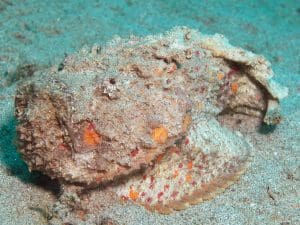
Examples of physical and behavioral adaptations for camouflage:
The Stonefish has developed a range of physical and behavioral adaptations to enhance its camouflage. Physically, its rough and textured skin helps it blend in with the rocky substrate. Its coloration and patterns match the surrounding environment, making it difficult to detect. The Stonefish also has the ability to alter its body posture to further resemble a rock, remaining motionless for extended periods.
Mention of the risks posed to humans due to its venom:
The Stonefish is renowned for its potent venom, making it one of the most dangerous fish in the world. The venom is located in the spines along its dorsal fin, and when disturbed or stepped on, the fish can deliver a highly painful and potentially life-threatening sting. Accidental encounters with the Stonefish can occur, particularly when individuals are wading or swimming in shallow coastal waters. Prompt medical attention is crucial in the event of a sting, as the venom can cause severe tissue damage and other systemic effects.
Octopus mimic (Thaumoctopus mimicus):🐟
Introduction to the mimic octopus and its general characteristics: The mimic octopus (Thaumoctopus mimicus) is a fascinating marine species known for its remarkable abilities to mimic other marine animals. It is found in the Indo-Pacific region, particularly in the coastal waters of Indonesia and the Philippines. This unique cephalopod has captured the attention of researchers and underwater enthusiasts alike due to its extraordinary mimicry skills.
Description of its astonishing ability to change shape and color to imitate other marine animals:
The mimic octopus possesses an astonishing ability to change its shape, color, and texture to mimic various marine creatures. It can transform itself to resemble venomous animals such as lionfish, poisonous sea snakes, and even toxic flatfish. Additionally, it can imitate non-threatening species like sea anemones, flounders, and crabs. This remarkable skill allows the mimic octopus to blend seamlessly with its surroundings and deceive potential predators or prey.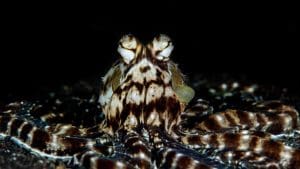
Examples of the imitations it can perform and how it uses them for camouflage and protection:
The mimic octopus showcases an impressive repertoire of imitations to camouflage itself and protect against predators. For instance, when it senses a threat, it may mimic the appearance of a venomous animal to deter predators from approaching. Alternatively, it can imitate a harmless creature to avoid being targeted. The mimic octopus can also use its mimicry to approach prey undetected, using its imitations to deceive and capture unsuspecting fish or crustaceans.
Highlighting the complexity of its camouflage and how it has evolved to be so effective:
The camouflage ability of the mimic octopus is exceptionally complex, involving not only changes in color and texture but also alterations in body shape and movement patterns. Through a combination of muscle contractions, skin pigments, and the use of specialized cells called chromatophores, the octopus can achieve astonishingly accurate imitations. Its mimicry has evolved over time to be highly effective, providing a significant advantage in both survival and predation.
Note:
The mimic octopus (Thaumoctopus mimicus) is a fascinating creature with extraordinary abilities to mimic other marine animals. Its skill in changing shape, color, and behavior to imitate various species showcases the incredible diversity of nature’s adaptations.
Pygmy seahorse (Hippocampus bargibanti).🐟
Brief introduction to the pygmy seahorse and its habitat: The pygmy seahorse (Hippocampus bargibanti) is a small and enchanting marine creature that belongs to the seahorse family. It is commonly found in the tropical waters of the Indo-Pacific region, particularly in coral reefs and seagrass beds. Despite its tiny size, the pygmy seahorse has captured the attention of divers and marine enthusiasts due to its remarkable camouflage abilities.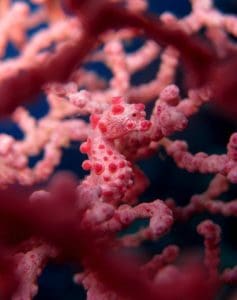
Explanation of its camouflage ability to blend with algae and corals:
The pygmy seahorse possesses a remarkable camouflage ability that allows it to perfectly blend with its surroundings, particularly algae and corals. It matches the color, texture, and shape of the algae or corals it inhabits, making it incredibly challenging to spot. This exceptional camouflage not only helps it avoid predators but also provides effective camouflage while hunting for small prey.
Description of anatomical adaptations enabling perfect camouflage:
The pygmy seahorse showcases fascinating anatomical adaptations that contribute to its flawless camouflage. Its body is covered with small skin projections that resemble the polyps of the coral or algae it lives in. These projections, combined with its color-changing ability, enable the seahorse to mimic the appearance of its chosen habitat. Its ability to control its coloration and blend seamlessly with the environment is truly remarkable.
Importance of camouflage for survival in a predator-filled environment:
Camouflage plays a crucial role in the survival of the pygmy seahorse in an environment teeming with predators. By blending perfectly with the algae and corals, it becomes practically invisible to potential threats. This camouflage not only allows the seahorse to hide from predators but also helps it ambush prey by remaining undetected until the opportune moment. The ability to evade detection through effective camouflage is essential for the pygmy seahorse’s survival and successful reproduction.
Note:
The pygmy seahorse (Hippocampus bargibanti) is a captivating marine creature renowned for its ability to camouflage and blend seamlessly with algae and corals. Its remarkable adaptations and camouflage skills contribute to its survival in the vibrant and predator-filled underwater world.
Wunderpus photogenicus squid.🐟
Description of the Wunderpus squid and its natural habitat:
The Wunderpus photogenicus squid, also known as the Wunderpus octopus, is a captivating marine creature found in the warm waters of the Indo-Pacific region. It typically inhabits sandy or muddy substrates, coral reefs, and seagrass beds. With its unique appearance and fascinating behavior, the Wunderpus squid has become a sought-after subject for divers and underwater photographers.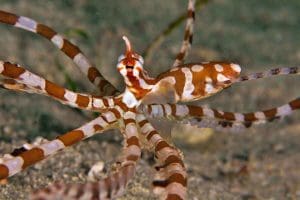
Explanation of its sophisticated camouflage and ability to mimic patterns and textures:
The Wunderpus squid possesses a sophisticated camouflage mechanism that allows it to blend seamlessly with its environment. It can rapidly change the color, pattern, and texture of its skin to imitate various objects, such as coral, algae, or even rocks. This incredible ability to mimic patterns and textures enables the Wunderpus squid to avoid detection by predators and surprise unsuspecting prey.
Examples of how it utilizes its camouflage to hunt and evade predators:
The Wunderpus squid employs its remarkable camouflage to its advantage while hunting and escaping from predators. When hunting, it can imitate the appearance of surrounding objects to remain hidden from its prey until it strikes with lightning speed. In the face of danger, it can rapidly change its color and pattern, using disruptive patterns or blending with the background to confuse predators and create a momentary distraction, allowing it to escape quickly and disappear into its surroundings.
Mention of the beauty and fascination it evokes in divers and underwater photographers:
The Wunderpus squid’s enchanting appearance and mesmerizing camouflage have captivated the hearts of divers and underwater photographers. Its vibrant colors, intricate patterns, and seemingly magical transformations make it a subject of great fascination. Observing the Wunderpus squid in its natural habitat is a thrilling experience, leaving divers and photographers in awe of its beauty and the wonders of the underwater world.
Note:
The Wunderpus photogenicus squid, with its sophisticated camouflage abilities and captivating appearance, has become a favorite subject for divers and underwater photographers. Its ability to imitate patterns and textures, combined with its agility and stunning transformations, showcases the incredible diversity and beauty of marine life.


